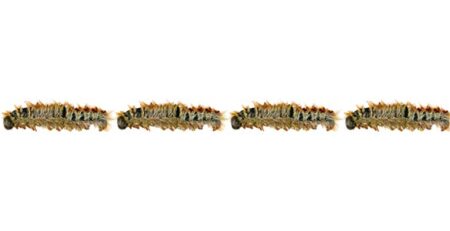Table of Contents
Toxoplasmosis, cats and pregnancy: if you are expecting and your gynecologist has intimated that you should put your beloved cat at the door, then do the right thing i.e., change doctors and keep cuddling the cat.
The arrival of a baby is always a cause for joy in every family, but contextually, concerns are also triggered for mothers-to-be who have cats at home because of the terrorism done about toxoplasmosis infection.
Many expectant mothers, uninformed gynecologists and doctors intimidate them to “get rid” of their cats, raising the possibility of contracting toxoplasmosis, an infection of parasitic origin transmissible to the fetus, from the animal.
What is true about such alarmist proclamations? Let’s have some clarity and above all, safeguard the house cats who, due to poor training and superficiality of some gynecologists, are too often unfairly and cruelly put at the door.
Pregnant women and cats can, indeed should, continue to coexist peacefully. And we explain why.
What is toxoplasmosis caused by
Toxoplasmosis is caused by Toxoplasma gondii, a pathogenic microorganism that completes its life cycle only within the cells of warm-blooded animals (mammals, birds and rodents).
Toxoplasmosis is an animal-to-human transmissible disease that almost always takes an asymptomatic and silent form and may go, even, undetected.
For this reason, it is very difficult to notice that you have contracted it.
Sometimes it can take on a more serious character.
In women, if the disease is contracted for the first time during pregnancy, it is possible to transmit it to the fetus, and toxoplasmosis can become dangerous.
How many ways you can contract toxoplasmosis
Toxoplasma gondii is found in the flesh of infected animals in the form of cysts but also in cat feces and in soil in which an infected cat or other animal has defecated.
And this is where confusion arises with respect to this issue, as most people generically blame every poor, unfortunate cat.
In actuality, the most likely routes of infection of toxoplasmosis in humans are ingestion and handling of raw or undercooked meat, raw vegetables not treated with disinfectants.
Climate, hygienic conditions and feeding patterns are the factors that most influence the incidence of toxoplasmosis.
Why the cat is considered the major culprit in the transmission of toxoplasmosis
The parasite completes a complete cycle only in cats, which excrete the oocysts (a kind of egg) through feces.
Oocysts, once expelled with feces, need 3-5 days of exposure to oxygen and being at a high temperature and humidity to become infectious.
There is a chance of contracting toxoplasmosis from the cat if:
- one leaves feces for more than 24 hours in the litter box
- are removed with bare hands
- they put their feces-stained hands directly into their mouths
The main cause of infection is not living with a feline but, rather, poor or inadequate hygienic conditions.
Proper daily litter box hygiene precludes any possible contamination, and stroking or kissing the cat is not enough to become infected: the protozoan lives inside the cat’s intestines, not on the cat’s fur or even in saliva.
Which cats can transmit toxoplasmosis
Only an infected cat can be a source of toxoplasmosis infection.
Cats become infected by eating raw meat or licking contaminated soil, but if they always live exclusively indoors and are never fed raw meat, the chance of them contracting toxoplasmosis is nil.
While assuming that your cat has toxoplasmosis in place, know that it does not remain infested for life but, at most, for a period of 15-20 days. Then, once he becomes immunized, he cannot contract the disease again.
How to find out if your cat has toxoplasmosis
To ascertain the health status of your cat, simply have a periodic examination of the cat’s feces and a blood draw for serologic testing at your local clinic or veterinarian.
The tests will allow an assessment of whether the cat has recently come in contact with the parasite.
What tests should a pregnant woman perform
In case a woman decides to start a pregnancy or as soon as she finds out that she is expecting, she should undergo a diagnostic blood test, the T
oxo-Test.
The test allows pregnant women to find out whether:
- Are immune (positive outcome)
- Are at risk of contracting the infection (negative outcome)
- there is ongoing infection
Prevention of Toxoplasma infection consists primarily of monitoring the antibody titer throughout pregnancy.
The likelihood of fetal infection increases as gestation progresses.
Fetal infection could give rise to severe manifestations in early infection, less so in late infection when the child is more mature and formed.
However, toxoplasma is susceptible to antibiotic therapy, and prompt diagnosis enables prompt treatment.
Here are the precautions to take to avoid infection
If you are a mother-to-be and not immune to toxoplasmosis, it is important that you follow these hygiene and behavioral rules throughout your pregnancy:
- Do not consume raw or “rare” meats or sausages
- if there is a cat in the house, always handle its litter box with gloves. When possible, it is still better to delegate this operation to another person
- To prevent the cat from contracting the infection, it is inadvisable to feed it raw meat and feed it only kibble and canned food. In addition, it is good to prevent kitty from wandering in open or poorly controlled spaces
- Always wash raw vegetables very carefully
- Always wear gloves when gardening, even on the terrace at home, as the soil may be contaminated
At La Veterinaria Clinic you can have your cat undergo routine and specific examinations. Please feel free to contact us.
Equipped with an on-site testing laboratory, Clinica La Veterinaria is always open daily h24 including holidays and with Emergency Room service from 8 pm to 8 am.
For the joy of seeing them HAPPY.











